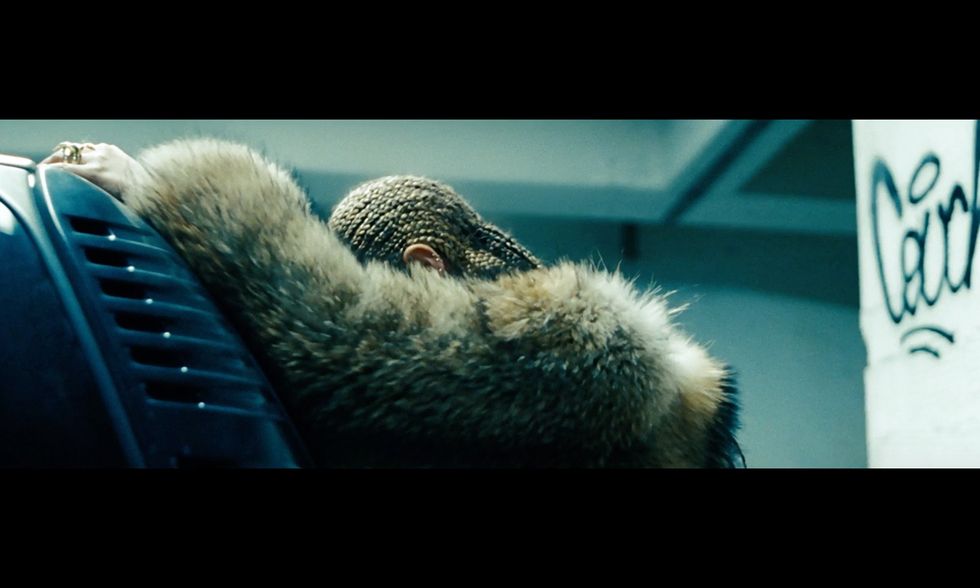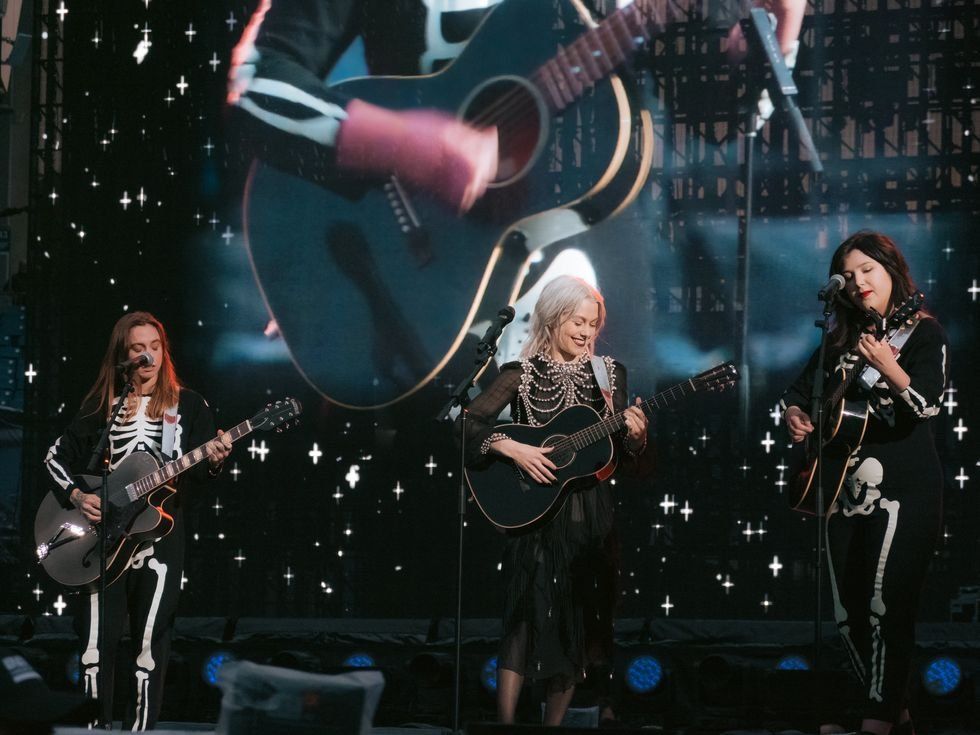The multi-dimensional album creatively envisioned by Beyoncé Knowles, one of the world’s top charting pop artists, takes the admirer through a journey in which it is detailed in how Southern black women represent the most disrespected, neglected, and unprotected denizens of the United States of America. This record—chiefly named "Lemonade" (a symbolic title that describes how beauty can still sprout from darkness)—cleverly ties the icon’s personal life that is earnestly sang through her music while snippets of poetry, written by Warsan Shire, connect each new song that chronicles the issue that Beyoncé is attempting to emphasize: black women are underrepresented. Ultimately, the message does not just extend to the culture from which this popular singer originates, but rather her focus can be attributed to the global movement for feminism—as the visual aspect of this artistry journeys through self-knowledge and healing, elements that women across the world can identify with. Beyoncé Knowles’ latest album, "Lemonade," a cultural and social landmark for its medium, demands to share its objective—to highlight the contempt faced by African American women—through its staggering visual aids that give life to powerful lyrics.
From its soft beginning and all the way until its harshly rough, yet empowering ending, the visual component to "Lemonade"brandishes the culture emanated by black women by the constant footage given of real life film reels of them while also drawing upon their African heritage as seen by the application of dresses and stylization of face paint that clearly delves from those roots. The visual landscape of the album unravels as the story unfolds with its consistent iconography of black Southern women’s history as the key individuals adorning Beyoncé’s similar struggle traverse through time with her and don alike outfits and comparable makeup to signify the exact time period that each segment of the short movie is trying to exemplify. Primarily, the setting of New Orleans is heavily incorporated into this conceptual piece of art: in the song “Love Drought," the album’s muse lays upon the field of the Superdome, the site where victims of Hurricane Katrina were forced to take shelter and this natural disaster was further dramatized in the last song of this conceptual piece, “Formation," or rather, most notably the treatment of it: whereby the U.S. government responded too late in sending reparations and help, and America’s society turned their backs on those in need and later treated displaced victims with timid caution. Backtracking through the cultural history present in "Lemonade," in the second song, “Hold Up," Beyoncé dresses herself in a saffron garb that pays tribute to Yoruba Orisha Oshun who is an African deity that hails from Nigeria who is the orisha of sweet water, sexuality and creativity, whose generosity makes life worth living and this is precedent when the artist rolls into the scene on a cascading wave of water that drowns the entire town beyond the doors that she walks out of. Choosing to adopt the fashion of an ancient African goddess is a strong nod toward the traditional beliefs that the African American women have stemmed from today, it is a signal that the culture from which one comes from, no matter how old, should not be ignored, but rather to take strength from as Beyoncé saunters through the town with wrath as she deals out destruction.
Furthermore, Beyoncé Knowles’ African heritage is used upon the faces of her counterparts on the bus in the song, “Sorry," whereby each girl is graced with a face masked in intricate patterns of painted art that take ownership from the Sacred Art of the Ori. This special form of body art manifested from Laolu Senbanjo, an artist from Nigeria, as it is a ritual of the Yoruba religious practice of becoming one with yourself or awakening the God in you and the placement of this cultural practice within this scene of the short movie highlights the traditional notion to draw strength from one’s religion—a facet of one’s culture—to stand up to the oppression facing them. With this medium of art, it is believed that the soul, mind, and body are connected spiritual to form a connection with a manifestation that is more powerful than the mere human who has drawn the symbols upon.
Also, the snippets of poetry featured throughout the visual album written by British author, Warsan Shire, born from Somali and Kenyan parents showcases Beyoncé’s desire to strictly stay within the bounds of an artistic decision to share the culture that encapsulates the struggles faced by black women across multiple countries. Lastly, "Lemonade" returns quite a few times to a setting that appears Antebellum in its grandeur and stylization, but rejects the actual customs of that time period by portraying an all-African American, matriarchal society whereby these women live life for themselves rather than a master that would have been present at this occurrence in history. This supersedes the presence that the concept that is so powerfully orchestrated throughout the hour long visual aid exists within the past and present and future.
While Beyoncé Knowles’ latest venture into the pop world of music can be considered to be deeply personal to her own life, this only proves to be a surface level viewpoint as this icon backs her album’s songs with a short movie that sets out to highlight the oppression chiefly faced by the black woman to shine a light to those who are not. Her purpose in constructing this multifaceted realm of craft was far more political than it was personal. To begin with, Beyoncé’s first live performance of the single from this project, “Formation," was performed at Super Bowl 50 whereby the musician and her dancers each were clad in outfits that clearly paid homage to the Black Panthers, an organization made up of African Americans that patrolled neighborhoods that were mostly made up of African Americans to protect these residents from police brutality—her inclusion of these outfits was a point made against the police brutality that has recently sprung up in the past few years. This political utilization was further used in the music video for the same song where a certain message is scrawled on a wall: “Stop shooting at us," and a scene is shot that features a young black boy dancing in front a squadron of armed police officers before he puts his hands up in front of their guns and shields. The song, “Formation," really is an archetype from which the entire album wishes to derive from. In one of its last attempts to incorporate the actual political aggression occurring around Lemonade to which gave its later purpose and fruition, during the song “Forward," a scene plays out with the mothers holding pictures of their deceased sons who fell victim to the recent spike in police brutality, principally the mothers of Trayvon Martin, Mike Brown, and Eric Garner. The song that plays during this interesting sort of musical memoriam is about moving on from the vehemence of the past, but still bringing the scars to the present to make a better future. Politically, what stands out most in this visual experience is the speech taken from Malcolm X that is looped over a montage of footage of everyday black women with the famous quote given by the revolutionary: “The most disrespected woman in America, is the black woman. The most unprotected person in America, is the black woman. The most neglected person in America, is the black woman. This quote represents the struggle that Beyoncé tries so hard to exemplify through "Lemonade;" it acts as the thesis for the entire short film. "Lemonade's"multiple chapters — intuition, denial, anger, apathy, emptiness, accountability, reformation, forgiveness, resurrection, hope, redemption — are at once about black women’s relationship to an unequal America.
The backdrop of the film, what plays throughout the entire scope of it and what ultimately breathes life into it, is the original music for the original album that is likewise named, "Lemonade." While the poetry of Warsan Shire circumvents around the audacious lyrics that reflect more than a surface analysis of the text, the footage of the entire movie is always changing. Throughout all sixty minutes of the film and throughout each song that lines up, there is always a sequence of a filmed picturesque version of what music videos made by pop artists usually require, but weirdly enough this movie ‘supercuts’ interviews with real people that are weaved to further establish the conceptual effort of focusing upon the strife faced by the black woman on a daily basis, and this includes every single woman of African or African American heritage rather than just the pop idol that took advantage of the issue to draw a light to it. In "Lemonade," there are no clear demarcations between reality and surreality or past and present; color and black-and-white are used interchangeably which further lends to the message that the darkness from the past can be taken into the present to create a better future. The quality of the project is a piece of spoken word, it is a narrative film, a map of cultural reference points, and a window into the soul of an icon who draws upon her own life to speak for those around the world.
As the world of music continues to delve deeper into darker topics that leave behind the sharing of the fun times at parties and begin to trade these tales in for more politically charged stories that can actually provide for inspiration and intercultural communication, the social sphere among people buzzes with a need for questions and answers. The culture manipulated and emanated by the black woman can only ever truly be completely understood by the black woman, but this does not mean that facets of it cannot be shared as Lemonade attempts to do. Communication across different cultures can still happen through mediums that do not just deal with typical conversation because there is still a voice in this work of art and the message presented from all twelve songs is clearly given. When approaching this visual masterpiece, people of color, white people, and even black men will come into contact with a culture that is not entirely their own, and this culture is being communicated to them through the only way a musician knows how to communicate their point: through song. Beyoncé Knowles’ magnum opus strives to inter-culturally communicate the oppression faced by the black woman and their continuous storied battles to heal from this constant suppression of freedom.




 Energetic dance performance under the spotlight.
Energetic dance performance under the spotlight. Taylor Swift in a purple coat, captivating the crowd on stage.
Taylor Swift in a purple coat, captivating the crowd on stage. Taylor Swift shines on stage in a sparkling outfit and boots.
Taylor Swift shines on stage in a sparkling outfit and boots. Taylor Swift and Phoebe Bridgers sharing a joyful duet on stage.
Taylor Swift and Phoebe Bridgers sharing a joyful duet on stage.












